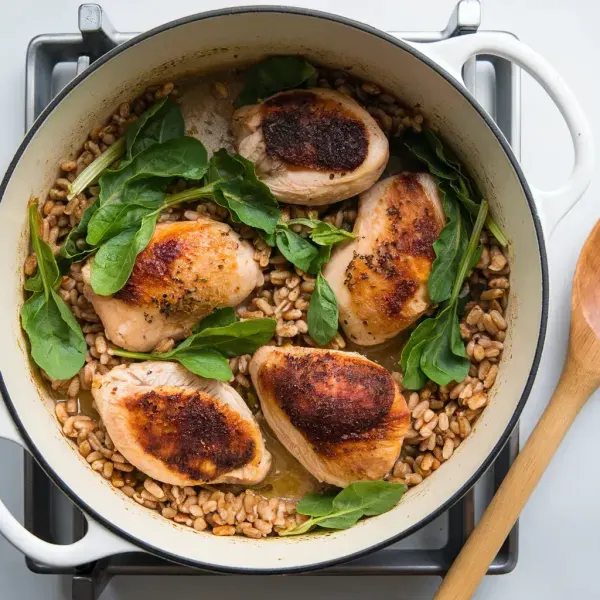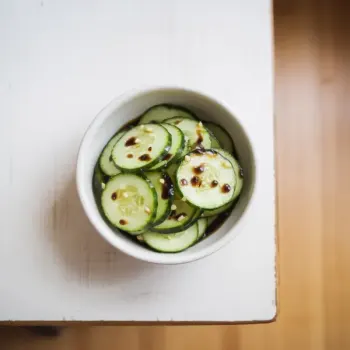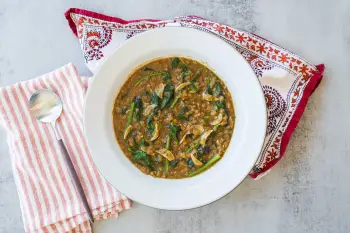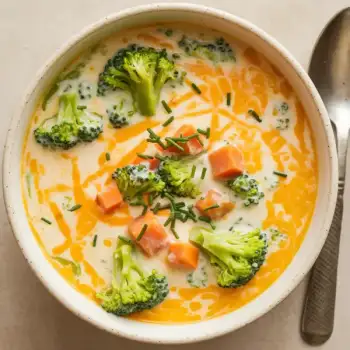
 90 minutes
90 minutesA hearty and flavorful dish combining tender chicken, nutty farro, and peppery watercress in a vinegar-infused broth.


Whole Chicken, cut into parts
0 lb
to taste
to taste
tablespoons
Garlic Head, halved
each
Farro
cups
Yuzu Kosho, optional
tablespoons
as needed
Watercress, thick stems removed
cups
1. Season and Sear Chicken
Season the chicken pieces with kosher salt and freshly ground black pepper. Heat the canola oil in a large Dutch oven over medium-high heat. Sear the chicken for 10 to 12 minutes per side until golden brown and skin is crisp.
2. Toast Farro and Garlic
Add the halved head of garlic and farro to the pot. Stir and toast for 5 to 8 minutes until the farro is nutty and aromatic.
3. Create Broth with Vinegar
Pour in the white distilled vinegar, add yuzu kosho if using, and enough water to just cover the farro. Bring to a simmer and scrape up any bits from the bottom of the pot.
4. Braise Chicken
Return the seared chicken to the pot, fit snugly into the mixture. Cover and cook gently for about 90 minutes until the chicken is tender and the farro is cooked through.
5. Finish with Watercress
Stir in the watercress until it wilts slightly before serving.
The bone and skin add flavor and moisture, which are essential for achieving a deep, savory taste. Searing the skin side first will render the fat and create a crispy texture.
Achieving a golden-brown sear on your chicken means more flavor. Use a heavy-bottomed skillet like cast iron for even heat distribution. Pat the chicken dry before searing and resist the urge to move it too soon – give it time to develop that crust.
Let the chicken rest off the heat for a few minutes. This crucial step helps the juices redistribute, ensuring a juicy bite.
A high-quality vinegar can make all the difference. Choose a good quality white wine or apple cider vinegar for more subtle, nuanced flavors. If you want a bolder taste, a sherry vinegar can add depth.
Throughout the braising process, keep an eye on the liquid levels so your dish doesn’t dry out. The chicken should be about two-thirds covered during braising.




Comments (0)